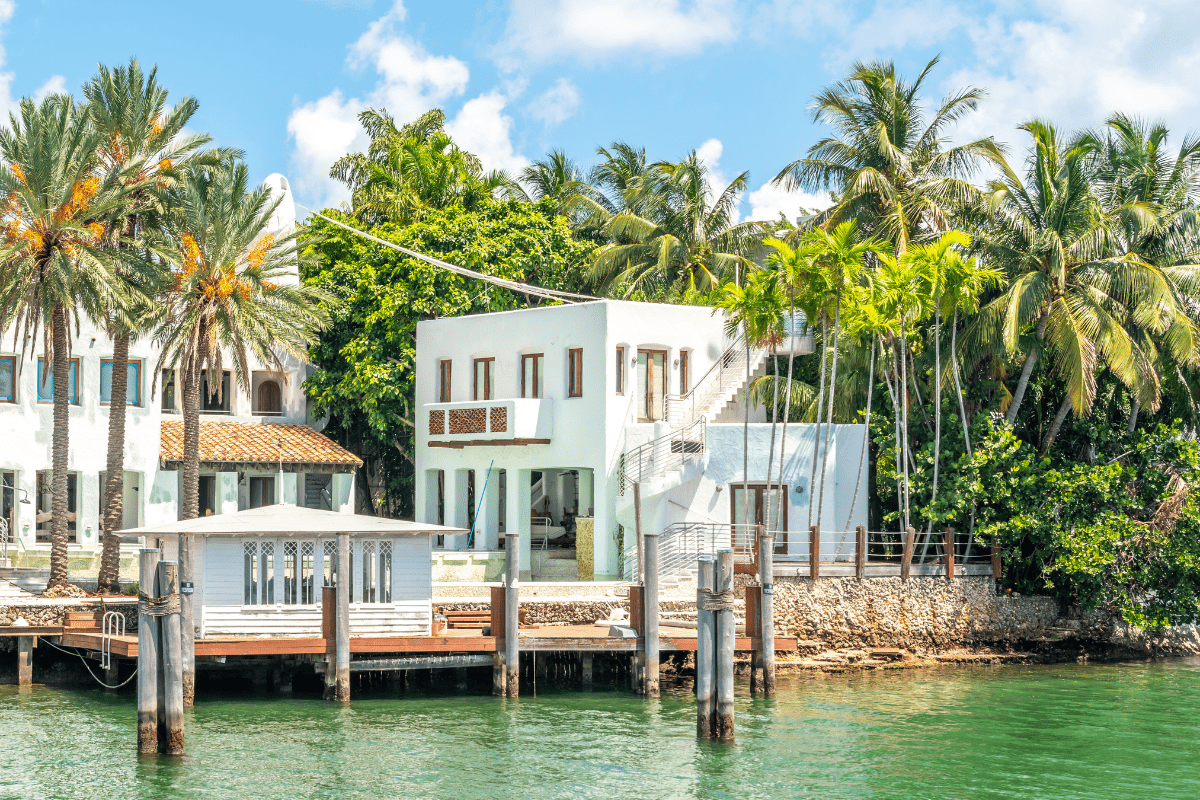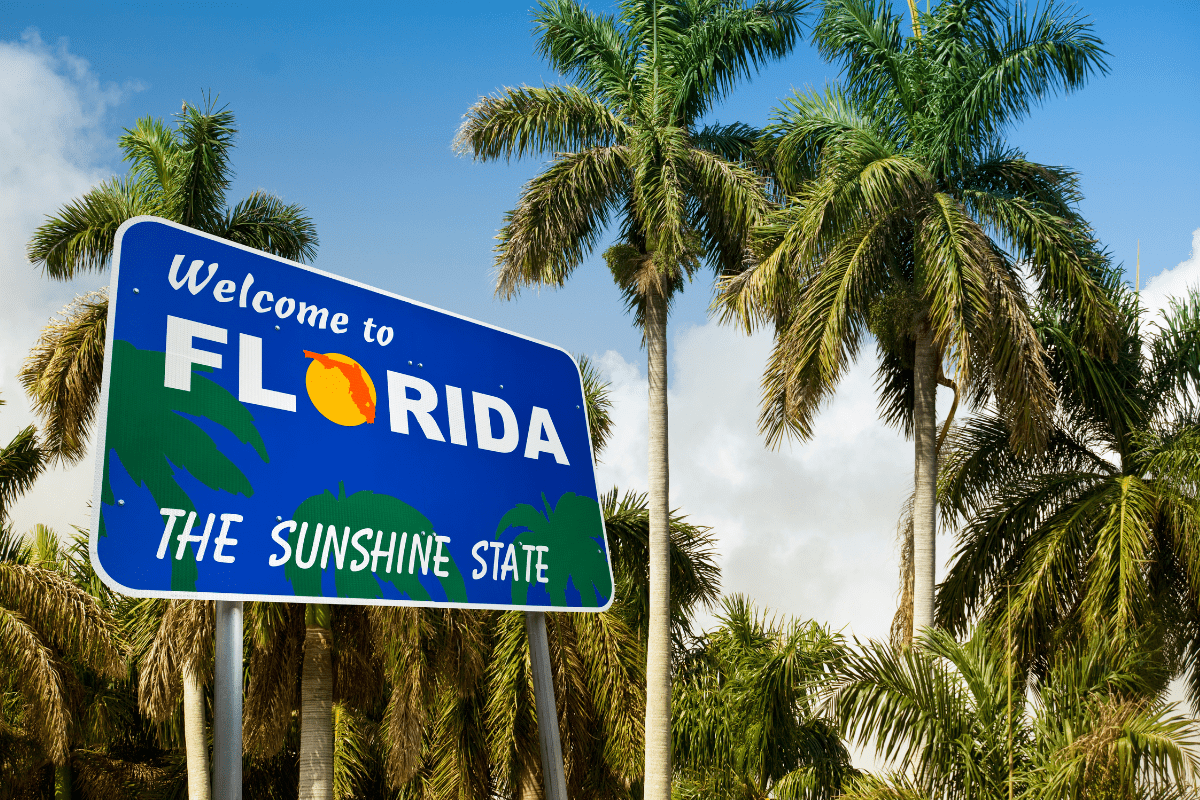Living in Florida means dealing with weather that can't decide if it wants to drown your house, blow it away, or just slowly dissolve it with humidity. As a homeowner in the Sunshine State, you've probably realized that maintaining your property here is like playing defense against nature's most creative destruction methods.
Your home versus Florida's climate: The eternal battle
Let's be honest—Florida's climate treats your house like a science experiment in accelerated aging. With humidity averaging 74.5% statewide, your home is basically marinating in moisture year-round. Tampa residents wake up to 86% morning humidity levels, which explains why your windows look like they're crying every sunrise.
The magic number for indoor humidity is 45-55%, which sounds simple until you realize that's a tighter range than what's recommended for literally anywhere else in the country. Most states suggest 30-50%, but Florida homes need that sweet spot to prevent your walls from growing their own ecosystem. Miss that target, and mold can start throwing a party within 24-48 hours of any moisture intrusion.
This moisture battle affects everything. Your beautiful hardwood floors start doing the wave. Metal fixtures develop that special "coastal patina" (aka rust). Even your leather couch might start growing things that weren't part of the original design. The worst part? Your AC system is working overtime just to squeeze water out of the air, which brings us to the real MVP of Florida homeownership.
Your AC unit: The hardest working appliance in America
Your air conditioner isn't just cooling your home—it's literally wringing the atmosphere dry. AC systems account for over 40% of energy use in Florida homes, which is four times the national average. That's not because we're wimps about the heat; it's because our AC units are pulling double duty as industrial-strength dehumidifiers.
Here's the filter change schedule that actually works in Florida:
- Peak season (May-September): Every 30-60 days
- Cooler months: Every 60-90 days
- Homes with pets: Monthly forever
- Homes with allergies: 45 days max
The sad truth is that HVAC systems in Florida live fast and die young. While the rest of the country enjoys 15-25 year lifespans, our units typically tap out at 8-15 years. It's like dog years, but for air conditioners.
Professional maintenance twice yearly isn't a luxury—it's survival. Spring service gets your system ready for its marathon season, while fall maintenance is basically a post-game physical to see what broke during summer. Skip these, and you'll find yourself in August with a dead AC unit and every repair company booked solid for three weeks.
Hurricane prep: Because "seasonal maintenance" includes storm survival
Hurricane season officially runs June through November, but if you're smart, you started preparing in April. The difference between old Florida homes and new ones became crystal clear during Hurricane Michael—houses built to modern building codes survived while older structures looked like someone put them in a blender.
If you're in a High-Velocity Hurricane Zone (basically anywhere near the coast), your home needs to resist 200 mph winds. That's not a typo. Two hundred miles per hour. For reference, that's faster than most NASCAR races, except the wind is trying to turn your roof into a frisbee.
Pre-hurricane season tasks that actually matter:
- Inspect and repair loose roof materials
- Clear gutters completely
- Trim trees (especially coconut palms)
- Test hurricane shutters
- Document everything with photos
The post-storm reality check
After a storm, the real danger often comes from well-meaning DIY repairs. Carbon monoxide poisoning from generators killed nearly 900 people between 2005 and 2017. Your generator needs to be at least 20 feet from any doors, windows, or vents. Yes, that means in the rain. No, your garage doesn't count as "outside" even with the door open.
Post-storm inspection should happen even if you think everything's fine. Water has a sneaky way of finding tiny openings and throwing mold parties in your walls. Document everything for insurance, even if it seems minor. That small soffit damage could be your ticket to a new roof if you play your cards right.
The termite situation (and other unwelcome roommates)
Florida pests don't mess around. Termites alone cause over $500 million in damage annually across the state. These aren't your garden-variety bugs—they're professional home destroyers with a taste for your biggest investment.
The termite prevention hierarchy goes like this:
- Eliminate wood-to-soil contact
- Fix moisture problems immediately
- Annual professional inspections ($200-$400)
- Quarterly pest control treatments
Ignore these steps and you're looking at $3,000-$8,000 in repairs. That's a lot of money to feed bugs you didn't invite to dinner. Carpenter ants join the party during their April-June swarming season, and they're particularly fond of wood that's already moisture-damaged. It's like insult to injury, except the injury costs thousands of dollars.
Coastal properties: Where salt air hates everything you own
Living near the beach sounds dreamy until you realize salt air can affect properties up to 100 miles inland. Coastal HVAC systems often fail within 7 years compared to 15+ years for inland units. That salty breeze is basically sandblasting your investment in slow motion.
Monthly freshwater rinses for all metal components aren't optional—they're survival. Your outdoor fixtures, railings, and even your AC unit's housing need regular baths. Think of it as spa treatment for your house, except instead of cucumber water, you're using a garden hose to fight corrosion.
Material selection for coastal homes isn't about aesthetics; it's about longevity. Stainless steel, marine-grade aluminum, and composite materials cost more upfront but last longer than a Hollywood marriage. Regular aluminum? That'll corrode faster than your patience during tourist season.
The money talk: Making maintenance financially bearable
Here's the beautiful truth about preventive maintenance: every dollar spent saves five dollars in emergency repairs. That's a 500% return on investment, which beats the stock market even on its best day.
The average Florida home needs $14,000-$18,000 in annual maintenance. Before you faint, remember that strategic prevention can cut these costs by 12-18% annually. That's $1,680-$3,240 back in your pocket just by staying ahead of problems.
Wind mitigation: Your secret insurance weapon
This is where things get interesting. A wind mitigation inspection costs $75-$150 but can reduce your insurance premiums by up to 88%. Average savings range from $300-$2,000 annually, meaning the inspection pays for itself faster than you can say "hurricane deductible."
Features that earn the biggest discounts:
- Roof-to-wall attachments (35% discount)
- Opening protection (60% discount)
- Hip roofs versus gable (40% savings)
- Impact-resistant windows
- Secondary water barriers
The My Safe Florida Home program is basically free money if you qualify. They offer matching grants up to $10,000—you spend $5,000 on improvements, they give you $10,000. Eligibility requires your home to be built before 2008 and insured under $700,000. It's like a BOGO sale for hurricane protection.
Energy efficiency: Because your AC never stops running
Every degree you raise your thermostat above 78°F saves 8% on cooling costs. In Florida's extended cooling season, that adds up fast. Setting your thermostat to 80°F instead of 76°F could save you 32% on cooling costs. Your guests might sweat a little, but your wallet will thank you.
Federal tax credits cover 30% of qualifying HVAC upgrades through 2032. Combine that with FPL rebates up to $1,930 for heat pump systems, and suddenly that new AC unit looks more like an investment than an expense.
The maintenance schedule that actually works
Your roof needs attention twice yearly—once before hurricane season (April-May) and once after (December-January). In Florida, asphalt shingles last 15-20 years compared to 25-30 years everywhere else. It's not fair, but neither is having beach weather in December.
Gutter cleaning frequencies by region:
- North Florida: 3-4 times yearly
- Central/South Florida: 3 times minimum
- Near pine trees: Monthly
- After any major storm: Immediately
Professional gutter cleaning runs $70-$150 per service, or you can DIY if you're comfortable on a ladder and enjoy scooping decomposed leaves. Just remember that Florida gutters don't just collect leaves—they're also home to exciting creatures like wasps, snakes, and the occasional confused iguana.
Pool maintenance: The eternal struggle
Your pool is basically a giant petri dish waiting to grow algae. Weekly chemical testing isn't a suggestion; it's the difference between a refreshing swim and a science experiment. Professional pool service costs $50-$325 monthly, but basic maintenance is totally DIY-able if you're willing to learn.
The pool equipment lifespan countdown:
- Pool pumps: 8-12 years
- Salt cells: 3-5 years
- Filters: 1-2 years
- Pool heaters: 7-10 years
Screen enclosures, those gloriously bugfree additions to your pool area, last 5-20 years depending on materials and maintenance. Small tears become big problems fast, so fix them immediately. A $20 repair today prevents a $2,000 rescreen tomorrow.
DIY versus calling the professionals
Some maintenance tasks offer excellent DIY savings without risking life, limb, or your home's structural integrity. Changing filters yourself saves $35-$60 monthly. Basic pool maintenance saves $1,200+ annually. Single-story gutter cleaning saves $70-$150 per service.
But some things require professionals, period:
- HVAC repairs (refrigerant is regulated)
- Electrical work (death is permanent)
- Roof repairs (gravity always wins)
- Tree trimming near power lines
- Major plumbing repairs
The tools that pay for themselves quickly include a good pressure washer ($100-$600), basic pool maintenance kit ($35-$100), and quality hand tools ($200-$500). That pressure washer alone saves $200-$500 annually in cleaning costs.
Regional cost reality check
South Florida maintenance costs run 15-25% above state average because everything there is extra—extra humidity, extra salt air, extra hurricanes. North and Central Florida offer 10-20% savings, though you trade hurricanes for more frequent freezes that can burst pipes.
Coastal properties face 20-40% higher maintenance costs regardless of latitude. That ocean view comes with a price tag that extends way beyond your mortgage. The average Florida homeowner pays $1,993 annually for insurance compared to $1,173 nationally, and that's before any claims.
Standard insurance policies exclude salt corrosion damage and limit mold coverage to $1,000-$10,000. Considering mold remediation can easily hit $15,000+, prevention isn't just smart—it's financially critical.
Making it all work without losing your mind
Success in Florida home maintenance comes down to accepting that your house needs more attention than a needy houseplant. The combination of humidity, hurricanes, pests, and salt air means constant vigilance, but the payoff is huge. Homeowners who stay ahead of maintenance consistently spend less money and deal with fewer emergencies.
Start with the non-negotiables: keep indoor humidity at 45-55%, change those AC filters religiously, and get annual professional inspections for everything. Build from there with wind mitigation improvements and energy efficiency upgrades. Document everything for insurance and take advantage of every rebate and tax credit available.
Most importantly, embrace the absurdity. Yes, you're essentially fighting the atmosphere itself to keep your house intact. Yes, your maintenance schedule looks like a part-time job. But you also get to live where other people vacation, enjoy year-round sunshine, and never shovel snow.
In Florida's climate, proactive maintenance isn't just smart—it's the difference between owning a home and feeding an endless money pit. Follow these guidelines, maintain a sense of humor about the whole situation, and your house might just survive another season in paradise. Plus, you'll have great stories about that time you found an alligator in your pool or when your entire neighborhood's roofs took a vacation during the last hurricane.





